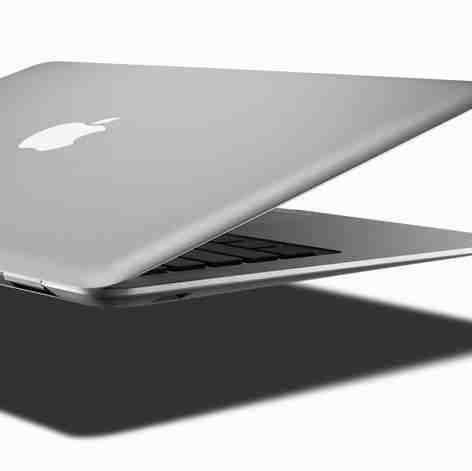Every Apple launch is something of an event and it's no different with the MacBook Air, as this is the thinnest notebook in the world.
Our quick take
You have to admire Apple's enthusiasm and the MacBook Air is a great design statement but as a practical machine it simply doesn't match anything released by Sony.
If you like style over content then you'll be happy, but we feel there are simply too many sacrifices in the MacBook Air to make it a compelling purchase.

Apple MacBook Air (2008) laptop - 3.0 / 5
| FOR | AGAINST |
|---|---|
|
|
At its thickest point it's 20mm, and a mere 4mm at its thinnest. It has managed to achieve this size by jettisoning almost every port and through the use of Intel's latest CPU.
The first thing you notice about the MacBook Air isn't how slim it is, or how simple the lines are, but how big it actually is. Apple may have opted for thin but you'll still need a normal notebook carry case to take it around with you.
Weighing 1.4kg, it is light and easy to carry but once again, not the lightest machine out there. There are two versions of the machine on offer but if you're going to even contemplate using the Air, it's worth opting for the high-end model.
Powered by an Intel Core 2 Duo chip running at 1.8GHz and shipping with 2048MB of memory, this isn't a slouch in performance terms and was more than able to handle everything we asked of it. The 64GB hard drive is a Solid State Disk (SSD) so there are no moving parts, making it even more durable and versatile.
We were surprised at the decision to opt for a 13.3-inch Super-TFT panel, as this adds to the weight and size of the machine. It uses LED technology, so images are super-sharp and the physical size of the panel is thin but for true mobility we would have preferred something smaller.
When you see the size of the bezel around the screen, which houses the webcam, you have to feel that Apple has opted for this size of screen to help the thermal dynamics of the system.
This theory is borne out by the keyboard, which also has plenty of space around it. There is a good deal of superfluous space with the MacBook Air that we hope is shaved off in future versions. The keyboard itself is amazing to use, the backlit keys feel great and respond well.
The over-sized touchpad allows for multi-gesture technology - the same as used in the iPhone - to be used but it just doesn't impress: it isn't as versatile or necessary on a notebook and feels more like a gimmick.
A great deal has been said about the decision to have the battery built-in and our tests convinced us it's a bad choice.
We managed to get a little over two and a half hours when using it out and about, which drops rather considerably when you hook it up to a Wi-Fi connection. So this isn't exactly the ideal machine for working anywhere, anytime.
Connectivity is also an issue as you'll find a single USB 2.0 port and a DVI-out for connecting to digital devices. These are hidden away under a neat flap while the other side sports a magnetic strip for your power lead, which is a great way to charge the machine.
If you want to sink to a network you'll have to use 802.11n wireless LAN but as we've already pointed out, this will drain battery power so is a compromise.
There is also a software feature called Remote Disk that allows you to hijack another machine to install programs and share files and we found this worked well, as does all Apple software.
To recap
It is an amazing piece of engineering but there are far too many sacrifices to make this the perfect notebook
